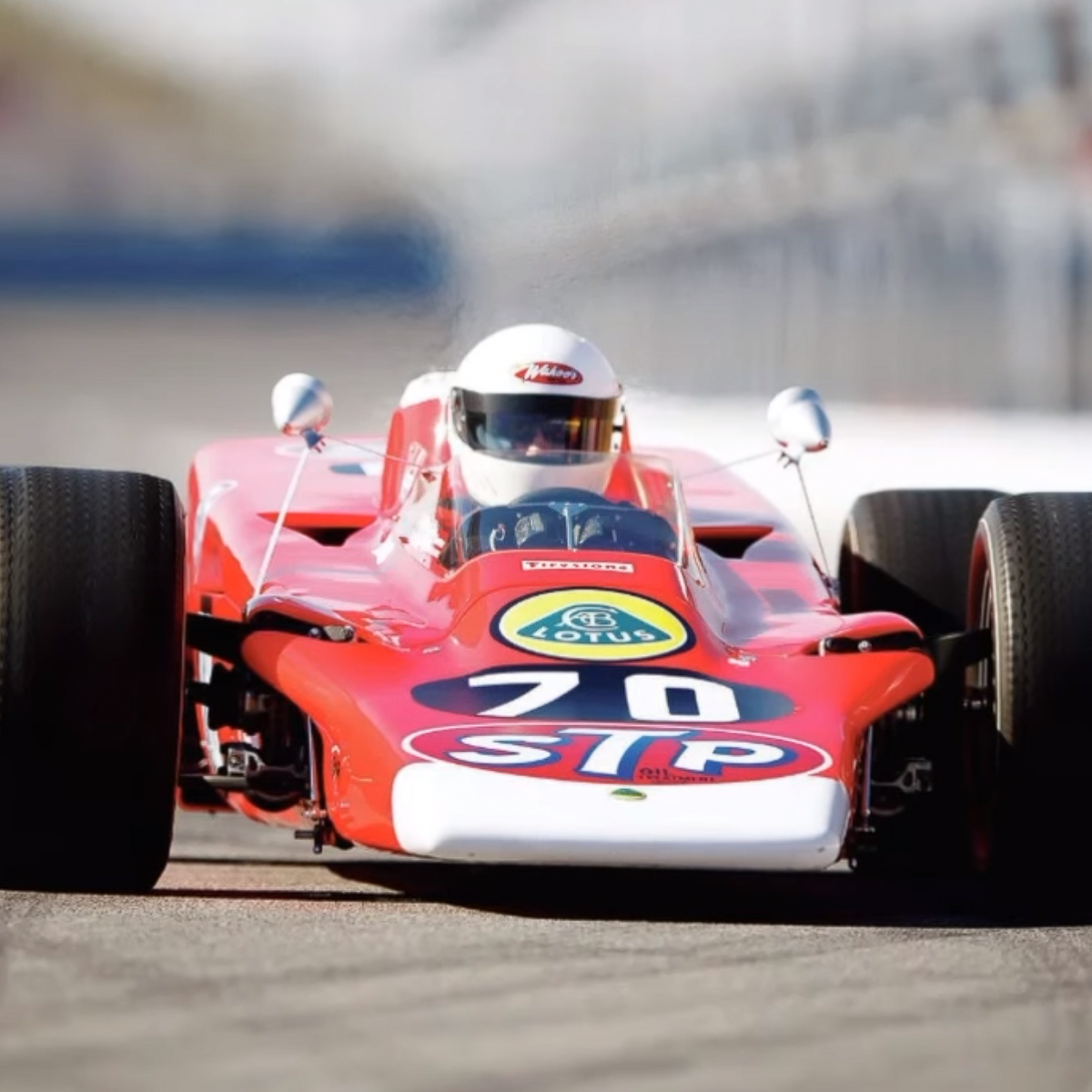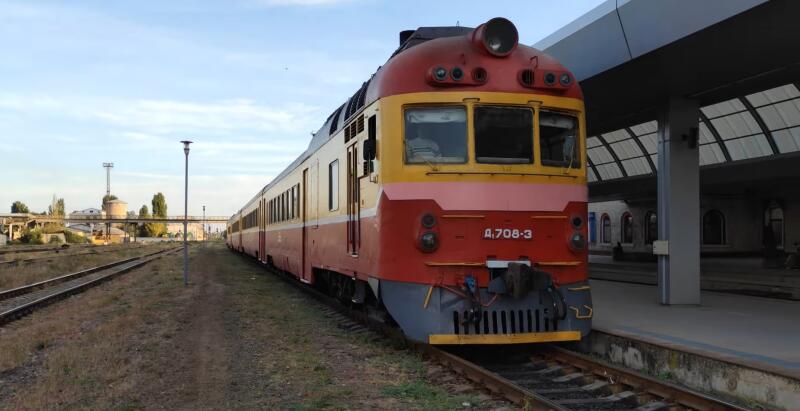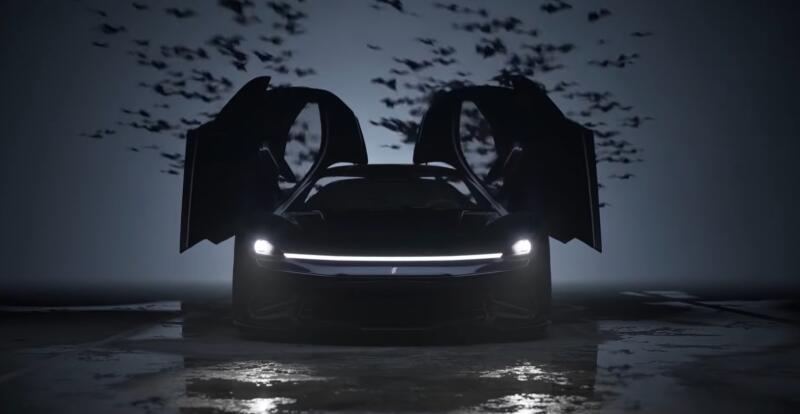✅ in piston engines, the duty cycle occurs in the same volume
✅ in the turbine - sequentially in its different parts
Laurels of pioneers in this area belong to the sports car Rover-BRM, which participated twice in the 24th Le Mans marathon. In 1967, with Graham Hill and Richie Ginter, the car covered 310 laps for a total of 4165 kilometers. If Rover-BRM were officially announced, it would take 7th place in the overall standings. Here is how Graham Hill described his impressions of the British "turbocar":
You are sitting quietly in this, so to speak, car, when suddenly it starts whistling as if you have a Boeing 707 behind you! And he is ready to suck and devour you like a bloodthirsty monster!
In Indianapolis, the first turbocharged car was the David Epperly-designed Demler Special roadster, which in 1966 was fitted with a General Electric gas turbine instead of the four-cylinder Offenhauser engine.
 Rover-BRM is the world's first racing "turbocar". Photo: Youtube.com
Rover-BRM is the world's first racing "turbocar". Photo: Youtube.comThe only car that managed to win the race with a gas turbine engine was the Howmet TX turbine car. In competitions sanctioned by the SCCA, he managed to win two victories. But the topic of today's story is two of the most famous "turbocars" in the history of motorsport.
STP-Paxton Turbocar
In 1967, STP CEO Andy Granatelli and his racing team unveiled the most innovative and controversial car ever raced in the Old Brickshop. The idea to use a helicopter turbine belonged to the Englishman Ken Wallace. First, he proposed the idea of a "turbine" to Dan Gurney and Carroll Shelby, but they, given Epperly's bad experience, refused. But Andy Granatelli decided to try ...
 STP team assembled. Photo: Youtube.com
STP team assembled. Photo: Youtube.comThe creation of the "turbocar" took place in the strictest secrecy: all parts, with the exception of the wheels and, accordingly, the engine, were made directly in Paxton. A Pratt & Whitney Canada ST6B-62 gas turbine engine was installed on the car. During the first practice runs, spectators dubbed Granatelli's new car "Silent Sam", or "Wooshmobile", because of the whistling sound it made as it passed. The car was equipped with all-wheel drive and a fuel tank located in the center, so the engine was placed on the side of the racer!
 The STP-Paxton Turbocar featured an asymmetrical design. Photo: Youtube.com
The STP-Paxton Turbocar featured an asymmetrical design. Photo: Youtube.comAndy Granatelli was proud of his brainchild, and advertised it as the world's first "space age" car. Parnelli Jones himself was put behind the wheel of the Woosh-mobile. By the way, at first Jones did not agree to pilot a strange car, but the amount of one hundred thousand dollars convinced him that it was not such a bad idea to drive a turbo car:
One day Andy called me and asked me to come to Paxton. When I arrived, he showed me this Turbine of his. I then thought that this is the wildest and most crazy thing I have ever seen! Nevertheless, I agreed to speak on it. For 100 thousand dollars.
Parnelli Jones led 171 laps out of 200 planned and confidently went to victory. But three and a half laps before the checkered flag, a transmission bearing failed and Jones retired:
I accelerated too intensively, leaving the pits. The dynamics of the "turbine" resembled a dragster, and such acceleration damaged the transmission. I still blame myself for this, realizing that I lost because of my driving style. After leaving, Andy went to the garage and cried like a child there. I still feel guilty before him, because the car broke down through my fault.
The race was won by A.J. Foyt in a piston-engined, turbocharged car. "Wooshmobile" lost the race, but managed to shake up the Indy world, ushering in a brief period of turbocars in Indianapolis.
Lotus Type 56
Encouraged by the success of the STP-Paxton Turbocar, in which Parnelli Jones nearly won the 500 Indianapolis 1967, British Lotus decided to build their own "turbine".
 Lotus 56. Photo: Youtube.com
Lotus 56. Photo: Youtube.comThe Lotus 56 was equipped with a Pratt & Whitney ST6B-70 engine with 505 horsepower at 35 rpm, almost the same as the Paxton. Colin Chapman used a Ferguson all-wheel drive system, with a 000:50 torque split. But due to poor handling, it was changed to 50:45 in favor of the rear axle. "Turbines" in training worked at 55% of the power, and still, before the turns, the pilots had to brake intensively (with their left foot, by the way) without releasing the gas pedal, so that on straight lines the power unit could quickly return to full power, thereby minimizing the delay. However, in the race, the pilots had to abandon this stunt. It was not even a possible collision with rivals, but mainly the reliability of the brake discs: such a style of piloting would not allow them to withstand a 80-lap race.
Joe Leonard took pole position with an average speed of 274,49 km/h. But unlike last year, when the STP-Paxton was in a league of its own, now the turbocars were driving at the level of the fastest piston-engined cars.
 All "turbocars" Lotus. Photo: Youtube.com
All "turbocars" Lotus. Photo: Youtube.comBut what seemed like a sure victory ended in disaster. Graham Hill crashed the car on lap 111 in turn two, Pollard lasted 188 laps of XNUMX before retiring with a fuel pump failure. And Joe Leonard in the lead ran into the same problem three laps later! The winner was Bobby Anzer.
After this race, turbocars in Indianapolis fell on hard times. USAC, under pressure from teams using Offenhauser and Ford piston engines, decided to limit the size of the air intakes for "turbines", making it de facto pointless to participate in the race. And yet the story didn't end there!
 Turbine Pratt & Whitney ST6B-70. Photo: Youtube.com
Turbine Pratt & Whitney ST6B-70. Photo: Youtube.comKen Wallis, who designed the STP-Paxton Turbocar with which Parnelli Jones almost won a race in 1967, left the Granatelli team and was looking for a new job. He found it with Carol Shelby, who hired Wallis to build turbo racing cars. Shelby hired reigning Formula One champion Dennis Hulme and reigning Can-Am champion Bruce McLaren as drivers.
Botany 500 Shelby Turbine Indy Car
Carol Shelby was so confident of victory that he told reporters, "Now we are closer to victory in Indianapolis than anyone." Everything looked great, but only until USAC changed the rules again, reducing the size of the turbine air intakes from 60 to 40 cm3. Instead of 1300 horsepower, only 58 remained in the General Electric T800 turbine. Against the backdrop of the then Offenhauser turbo engines, which developed over a thousand horses with the help of nitromethane, this was no longer impressive!
After testing on the dyno, I got a call from Judd Phillips and he said, "Man, we found some more power here." I told him: “Yes, why? Are you playing a prank on me?" And he's like, "No, I just added some nitromethane, just a tiny bit, like 10%." With this thing, Offy turned into King Kong! Nobody knew that we added nitromethane, but that is what allowed us to fight these "turbines".
— Bobby Anzer.
Nevertheless, the Shelby team decided to start using the expanding air intake trick. USAC got wind of this and were going to pay a visit to Shelby's garage the morning before qualifying.
 Shelby Turbine Indy Car. Photo: Youtube.com
Shelby Turbine Indy Car. Photo: Youtube.comWithout waiting for the check, under the cover of night, the Shelby Turbine was loaded onto trucks and taken off the track. So this car didn't complete a single lap in the race it was supposed to dominate! The departure of the Shelby marked the end of the short "turbocar" era in Indianapolis 500 history.
"Turbines" in Formula 1
In the meantime, Colin Chapman decided to try using the gas turbine Lotus 56B in Formula 1: neither before nor after that, no one has entered the car "without pistons" in Grand Prix races.
 Lotus 56 Formula One. Photo: Youtube.com
Lotus 56 Formula One. Photo: Youtube.com✅ In the Formula 1 configuration, the turbine produced 608 hp. With.
✅ Piston engines at that time developed about 430 horses.
That's just the delay in changing the position of the gas pedal at the Pratt & Whitney turbine reached six seconds! Not the best solution for twisty European roads! The pilots had to slow down before releasing the gas pedal at all. Over time, the delay was halved to three seconds. With such a "lag" the only chance for success was Monza.
1971 Italian Grand Prix
In a race famous for the tightest finish in Formula One (1 seconds in the top five), Fittipaldi finished eighth, losing a lap to the winner. So Lotus 0,61 didn't win even in the Temple of Speed. "Turbines" suitable for oval racing conditions proved uncompetitive on European tracks.
Now we can confidently say that even with the technology of the early eighties, using the energy of exhaust gases to increase downforce, the “turbines” would have looked much better! Indeed, due to the huge amount of exhaust gases, they would provide wild downforce. But history does not know the subjunctive mood...










